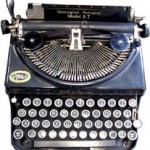 The Flying Misfits was a 1976 NBC tv-movie loosely based on the World War II exploits of Marine pilot ace Greg Boyington. Stephen J. Cannell wrote the script, taking liberties with the story featuring Robert Conrad as Boyington.
The Flying Misfits was a 1976 NBC tv-movie loosely based on the World War II exploits of Marine pilot ace Greg Boyington. Stephen J. Cannell wrote the script, taking liberties with the story featuring Robert Conrad as Boyington.
Based on Baa Baa Black Sheep, Boyington’s autobiography, The Flying Misfits impressed the NBC brass; it became a television series. Bruce Gamble wrote two books about Boyington and his pilots, Black Sheep Squadron and Black Sheep One: The Life of Gregory “Pappy” Boyington. Boyington’s VMF 214 squadron, unlike the one portrayed in the television series Baa Baa Black Sheep, was not composed of misfits, screwballs, and wise guys. They were, in fact, pilots with razor-sharp skills. Their ability to confront, engage, and defeat the Japanese pilots in the Pacific Theater was a key element to the United States winning World War II.
Inspired by the success of Charlie’s Angels, the creative powers behind Baa Baa Black Sheep added four nurses known as “Pappy’s Lambs” to the roster of characters. Baa Baa Black Sheep left the airwaves in 1978. But it carved a great path for one of television’s greatest storytellers. Donald Bellisario was a former Marine Corps sergeant who wrote and produced for Baa Baa Black Sheep. He later created Quantum Leap, NCIS, Airwolf, JAG, and Magnum, p.i. Actors, too, found a pathway to success after Baa Baa Black Sheep. John Larroquette played Lieutenant Bob Anderson. He later won several Emmys for his role of Assistant District Attorney Dan Fielding on Night Court. Larry Manetti found success on Magnum, p.i. after playing Lieutenant Bobby Boyle.
In Black Sheep One, Gamble quotes Conrad about Boyington’s perception of the show’s story lines: “His feeling about the show was that if the producers wanted to embellish it, if they wanted to Hollywood it, that was fine with him. Poignant moments between the commanding officer and his pilots were important to him. How his character related and played that part. Esprit de corps was very important to him. Anything that was fictionalized didn’t bother Boyington.”
Towards the end of World War II, Boyington was in a Japanese prisoner camp. Boyington’s 1988 obituary in The New York Times explains, “Major Boyington spent the war’s final year and a half as a captive of the Japanese, after his plane, riddled by bullets, crashed in Rabaul harbor on the Pacific island of New Britain in January 1944. The day he was captured, he was credited with his 26th confirmed kill, more than any other American aviator except Capt. Eddie Rickenbacker, in World War I. Major Boyington’s record was later adjusted to 28 planes shot down, a total that was exceed by other American fliers as the war went on.”
